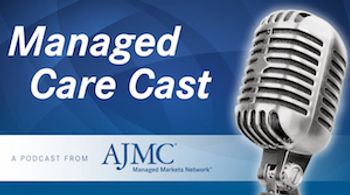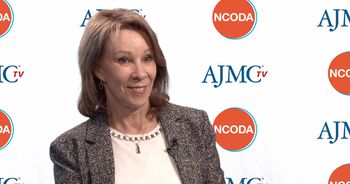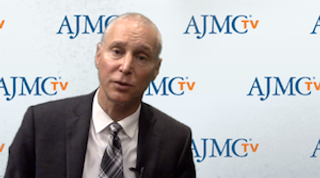
Alternative Payment Models
Latest News

Latest Videos

CME Content
More News

Richard Kane and Caroline Pearson, both from Avalere Health, provided oncologists gathered at the 2018 Community Oncology Conference an overview of reimbursement programs offered by CMS and advice on navigating them.

The third annual population health survey from Numerof & Associates found that healthcare organizations have not made as much progress to transition to risk-based agreements as they predicted they would 2 years ago.

Getting to value in healthcare has proven to be difficult, but succesful programs have certain characteristics, said David Blumenthal, MD, MPP, president of The Commonwealth Fund.

The Trump administration has finalized a new director for the Center for Medicare and Medicaid Innovation (CMMI): Adam Boehler, the former CEO of Landmark Health, a home-based medical care company.

Despite growth in the market, CMS has been slow to recognize the value that telehealth can bring to clinical encounters by encouraging utilization of telehealth technology through reimbursement models. However, now CMS has taken steps to encourage practices to leverage telehealth and remote monitoring activities through changes to the Quality Payment Program.

Health policy experts laid out a series of proposals to bring down prescription drug costs, lower US healthcare spending, and protect patients in a series of 3 papers published recently in Health Affairs. The papers, supported by the Commonwealth Fund, advocate for increasing competition, applying value-based purchasing, and protecting patients from high out-of-pocket costs.

With most accountable care organizations (ACOs) continuing to participate in the upside-only track, the Medicare Shared Savings Program has not netted the savings that the Congressional Budget Office estimated in 2010. But some findings indicate the program will see greater savings as more ACOs transition to the downside-risk tracks and gain more years of experience.

In a commentary for New England Journal of Medicine, Karen E. Joynt Maddox, MD, MPH, of Washington University School of Medicine, outlines key principles for designing alternative payment models (APMs) to avoid harming vulnerable populations and penalizing the providers who care for them.

At the Society of Gynecologic Oncology’s 2018 Annual Meeting on Women’s Cancer, 1 abstract found Patient-Centered Oncology Payment model would yield savings if hospitalizations were reduced, while another abstract piloted a scoring system for financial toxicity in gynecological cancers.

Every week, The American Journal of Managed Care® recaps the top managed care news of the week, and you can now listen to it on our podcast, Managed Care Cast.

This week, the top managed care stories included changes to the Next Generation ACO Model caused 7 accountable care organizations to leave the model; a report highlights how quickly hospital acqusition of physician practices is occurring; CMS finalizes coverage for Next-Generation Sequencing tests.

Sharing data and a collaborative relationship are 2 best practices from commercial payers participating in the Oncology Care Model, according to Ron Kline, MD, FAAP, of the Center for Medicare and Medicaid Innovation.

Coverage of our peer-reviewed research and news reporting in the healthcare and mainstream press.

Two years ago, CMS announced a new model for accountable care organizations (ACOs) that had participants take on greater performance risk but also potentially greater rewards. After the Next Generation ACO Model grew to a list that included 58 organizations across the nation, 7 have now dropped out after CMS made changes to risk adjustment.

A checklist to prepare for and submit documents for Merit-based Incentive Payment Program (MIPS) reporting under CMS' Quality Payment Program.

In 2014, Maryland and CMS entered a 5-year agreement employing the All-Payer Hospital Model in the state to cut costs while improving quality. According to the year 3 performance data, Maryland has met or is on track to meet all model requirements, saving hundreds of millions of dollars as it lowers hospital readmissions and steers the state away from a volume-based system.

During a session on expanding the role of value-based insurance design (VBID) in public insurance at the University of Michigan V-BID Center’s annual V-BID Summit on March 14, panelists representing 3 different payers shared how they have seen value-based principles take hold in their plans and their predictions for the future.

During a session on expanding the role of value-based insurance design (VBID) in public insurance at the University of Michigan V-BID Center’s annual V-BID Summit on March 14, panelists representing 3 different payers shared how they have seen value-based principles take hold in their plans and their predictions for the future.

At the Association of Community Cancer Centers' 44th Annual Meeting & Cancer Center Business Summit, held March 14-16, 2018, in Washington, DC, panelists shared strategies that have helped their organizations adapt to value-based care while ensuring that they never lose sight of the patient at the center of it all.

Panelists Kavita Patel, MD, Brookings Institute; Michael E. Chernew, PhD, Harvard Medical School; and Katy Spangler, Spangler Strategies discussed implementing the value-based insurance design concept in health policy and payment models, challenges with quality measurements, the role of employers in value-based care, and more at the VBID Summit, held March 14 by the University of Michigan Center for Value-Based Insurance Design.

What are the biggest drivers of change in oncology care and what needs most attention? This was the crux of the discussion during an early panel at the Association of Community Cancer Centers' 44th Annual Meeting & Cancer Center Business Summit, held March 14-16, 2018, in Washington, DC.

Overview of alternative payment models and how leading national organizations are involved with linking quality improvement initiatives and payment reform.

The report finds a connection between payment reform and hospital use patterns, but that connection may add to the debate that cardiologists have raised over the effect on patients.

Linda Frisk, PharmD, of Arizona Oncology, discusses the role of the pharmacist in new value-based payment models and her experience with the Oncology Care Model (OCM).

Coverage of the 67th Scientific Session of the American College of Cardiology.














































